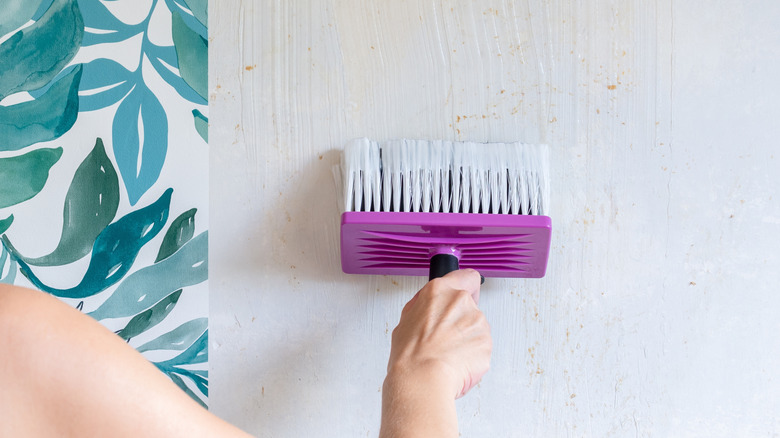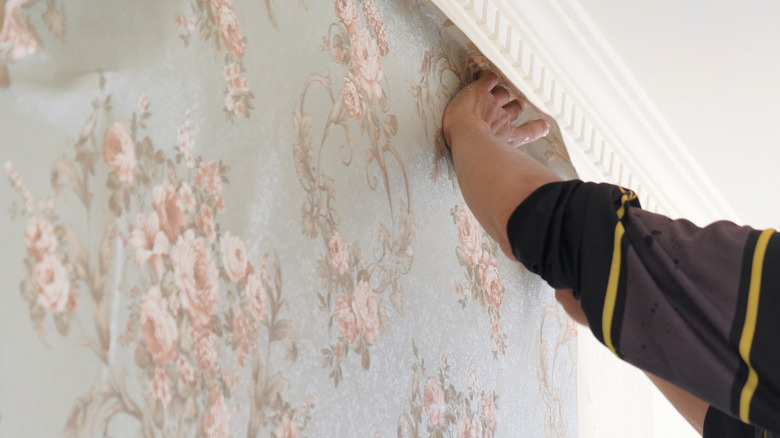The Difference Between Traditional And Peel And Stick Wallpaper: Which One Is A Better Choice
With so many innovative ways to use wallpaper in any room, choosing the right option is key to having your project turn out well. Both traditional glued-on wallpaper and modern peel-and-stick wallpaper update the look of your space. You can find a wide range of colors and patterns for both hanging types to fit the look you want in your home. The construction of the wallpaper products and the difficulty of the installation method are two common deciding factors for your home.
Digging into the installation details helps you better understand what each method involves. With traditional wallpaper, you apply paste either to the back of the wallpaper or directly onto the wall. While the paste can be messy, it doesn't dry immediately, which gives you some time to adjust the placement of your paper if necessary. From there, you use a squeegee to smooth out the bubbles and wipe away excess paste. Non-woven materials are more common today for traditional wallpaper, which makes the options more breathable, but traditional vinyl is still an option, especially for moisture-prone areas.
Installing peel-and-stick wallpaper is less messy and often easier. You simply peel off part of the backing, align your first strip, and smooth the self-adhesive wallpaper onto the wall. You'll slowly remove more of the backing as you move down the wall. Installation is usually faster because you have fewer steps. However, peel-and-stick wallpaper only lasts about 5 years, which is much less than the 15 year average lifespan of traditional wallpaper.
Which type of wallpaper is better for you?
To choose the right wallpaper for your space, consider your circumstances and installation goals. If you want something that's fast and easy, peel-and-stick wallpaper works well. Peel-and-stick wallpaper is also usually more affordable for a tight budget. You can expect to pay between $0.70 and $1.50 per square foot for materials for peel-and-stick wallpaper, according to JC Licht. The materials to install traditional wallpaper typically run between $0.50 and $8 per square foot plus labor if you choose professional installation.
Peel-and-stick wallpaper works best on perfectly smooth surfaces, so it might not fully adhere to a wall that has even subtle texturing. Because of this, it's a great choice for decorating your stair risers or covering a piece of furniture. Traditional wallpaper, on the other hand, typically holds up better in high humidity areas, such as bathrooms or kitchens. The strong adhesive creates a secure bond between the paper and the wall, keeping moisture from seeping behind the wallpaper.
If you don't own your home, peel-and-stick wallpaper is a simple upgrade you can make to your rental that won't cause any long-term damage. Traditional wallpaper is designed to stay put. If you've ever tried to remove old wallpaper from a house, you know how challenging it is to peel the paper and remaining glue from the walls. Peel-and-stick wallpaper pulls off of the wall easily and usually doesn't leave much residue behind. That makes it ideal if you're renting or if you like to change your room designs frequently.

